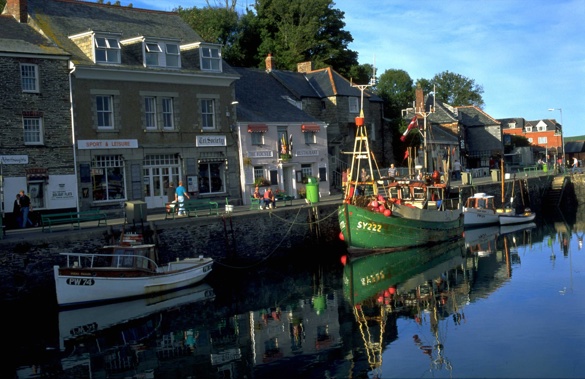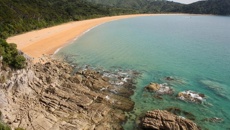
Britain’s south-west county of Cornwall is quite the sprawler and travelling distances can be very deceptive. My most memorable encounters in Cornwall have been free-roaming affairs, admiring the vastly diverse landscapes and ducking in and out of the spoil of fudge-tin villages, in self-drive style. But it’s the miles of marvellously varied coastline that crowns Cornwall with its siren-like pull.
Absurdly popular and chic seaside resorts mix it up with secluded, deserted coves and storied fishing villages drenched in maritime history. Cornwall wears its Celtic and Christian heritage with pride – numerous villages takes their names from early Christian missionaries. A case in point is the hot-spot resort of St. Ives, repeatedly showered with the award of being Britain’s best beachside town.
The origin of St Ives is attributed in legend to the arrival of the Irish Saint Ia of Cornwall, in the 5th century. History hounds, pop into the Sloop Inn for a breather. Perched on the wharf, this iconic property has endured as a fisherman's pub for many centuries, dated "circa 1312", making it one of the oldest inns in Cornwall. Take a walk along the landmark pier, built by John Smeaton in 1767, taste the Cornish salt spray and take in the cinematic panorama across the crescent of golden sands that defines St. Ives. In many respects, St. Ives is a victim of its own success, the narrow, winding and hilly lanes in the historic centre are choked up with cars. It’s one place where the case for a pedestrian-only zone is compelling.
Tucked down these winding alleys are a bevy of artisan studios and galleries including the Barbara Hepworth Museum, Sculpture Garden and Tate St. Ives. Early artists set up a seaside art colony in St. Ives in the 1920s, first attracted by the unusually clear light. Many art galleries are converted cellars, where fish were previously salted and packed. Plus the fairytale whitewashed cottages of St. Ives, thrill the senses, with their tidy gardens brimming with marigolds, sunflowers and meandering lobelia.
Another great Cornwall landmark on the bucket list is Land’s End, Britain’s most westerly point, jutting its snout straight out into the wild Atlantic tempest. Stretch the legs on a the fantastic clifftops walking trail, to marvel at the power of the foam-flecked waves and the constantly changing relationship between land and sea. Stop for the obligatory photo at the Land’s End signpost, which was first mounted in the 1950s by a local family business. You can take your own photo, or surrender to the full power of a tourist trap, and get the local photography company to snap you with the signpost adapted to signify your home town and its distance. Totter down the path to the West Country Shopping Village, for a pot of souvenir shopping from their spoil of old-world toys and trinkets. I purchased a wooden cube version of noughts and crosses – perfect for roadies.
Point the car north, and a couple of hours up the west Cornish coast, brings you to Rick Stein’s legendary foodie village of Padstow. Like St. Ives, it’s a throbbing tourist mecca in the sticky height of summer. To escape the crowds, a marvellous coastal sanctuary is St. Moritz Hotel, in the pint-sized village of Trebetherick, after zipping through the wild moorland interior. This glam-factor contemporary resort overlooking the Camel Estuary, is surprisingly inexpensive and caters equally impressively for travelling families as canoodling couples. Whether you plump for a romantic penthouse apartment or a child-friendly garden villa, you’ll have acres of space to relax. Plus the buzzing open-kitchen restaurant will ensure you remain nourished on fresh, local produce. (The Camel Estuary lobster and Porthilly oysters are divine.)
But what accentuates the unique appeal of St. Moritz Hotel is its supreme sense of tranquility, with an abundance of secluded bays and beaches, just an effortless jaunt away. Follow the footpath past the swimming pool, which threads its away down to the shoreline and a bevy of beach options. The shortest hop is straight down to Greenaway Beach, perfect for rock pooling. Just 500 metres away is the dreamy sandy cove of Daymer Bay. Surfing? Head to Polzneath, just a 900 metre walk from the hotel. If you want to mix up your day’s activities, take the walk to Rock, a long stretch of golden sand, and catch the ferry to Padstow.
Take your Radio, Podcasts and Music with you









